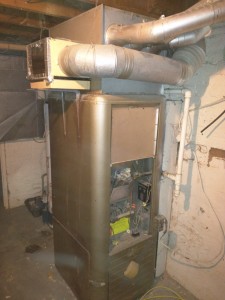Professional furnace installation technicians for a comfortable and top-performing home
The Ultimate Guide to Heating System Installment for a Cozy Home
Furnace installation is a vital facet of keeping a comfortable home environment, particularly during the chillier months. Comprehending the numerous kinds of heaters readily available and the significance of selecting the suitable size can considerably affect both effectiveness and convenience degrees. Additionally, a thorough installation procedure, enhanced by the right devices and products, makes certain optimum efficiency. This guide intends to outfit home owners with the expertise required to make educated decisions and implement reliable upkeep methods. As you think about these elements, the inquiry remains: what steps can you take to ensure your heating system offers you well for several years to find?
Sorts Of Heating Systems

Gas furnaces are the most usual choice because of their performance and lower operational prices. They utilize natural gas or gas, providing quick home heating and regular performance, making them optimal for cooler climates.
Electric heating systems, while normally less complicated to mount and keep, tend to have higher operational costs. They are typically preferred in locations where gas solution is inaccessible or for homes with existing electrical framework.
Oil heaters, though less common today, remain a viable option in certain regions. They shed home heating oil, which can be useful during chillier months, but their dependence on oil delivery poses possible obstacles.
In addition, there are high-efficiency versions readily available throughout these kinds, which can dramatically decrease power usage and energy expenses - furnace installation. Ultimately, comprehending these heating system types will help property owners choose a system that aligns with their heating needs, spending plan, and power choices
Picking the Right Size
Selecting the ideal dimension for a heating system is important to making certain optimum performance and energy efficiency. A small heater will struggle to maintain comfy temperature levels during the cold months, bring about increased wear and tear, greater power costs, and possible system failing. On the other hand, an oversized furnace may cycle on and off as well frequently, leading to ineffective home heating and uneven temperature level circulation within the home.
To identify the proper heating system size, a computation called the Guidebook J load estimation ought to be executed. This process reviews various aspects, including the square video footage of the home, insulation levels, window dimensions, and local environment problems. This extensive evaluation ensures that the heating system fulfills the particular home heating needs of the space.

Installation Refine Review
In terms of materials, you will certainly require ductwork, insulation, and sealing tape to ensure optimum air flow and energy performance - furnace installation. It is additionally essential to have a new heater filter handy, together with venting products, such as PVC pipe or steel flue, depending upon the kind of heater being set up
Safety tools, consisting of handwear covers, goggles, and a face mask, is additionally important to safeguard versus dust and particles during installment. Having all these tools and products easily offered not only simplifies the process yet likewise boosts the security and performance of the heating system installment.
Maintenance Tips for Long Life
To guarantee the long life of your furnace, it is important to execute a normal maintenance routine that addresses crucial parts of discover here the system. Begin by changing or cleaning the air filter every one to 3 months, as a clogged filter can restrict air flow and lower efficiency. Furthermore, evaluate and clean the blower assembly to protect against dust build-up that can impede efficiency.
Next, check the thermostat settings and rectify if necessary to guarantee precise temperature level regulation. Examine the ductwork for leaks or obstructions, as this can bring about power loss and uneven heating. Consistently lubricate the motor and bearings according to the producer's suggestions to decrease wear and tear.
Professional evaluations ought to happen every year, where a certified professional can analyze the furnace's overall condition, check for gas leaks, and ensure that safety features are functioning properly. Lastly, think about setting up a programmable thermostat to enhance energy usage and preserve constant home temperatures. By embracing these maintenance techniques, you can enhance your heating system's performance, prolong its life expectancy, and eventually take pleasure in a comfy and comfy home environment.
Final Thought
